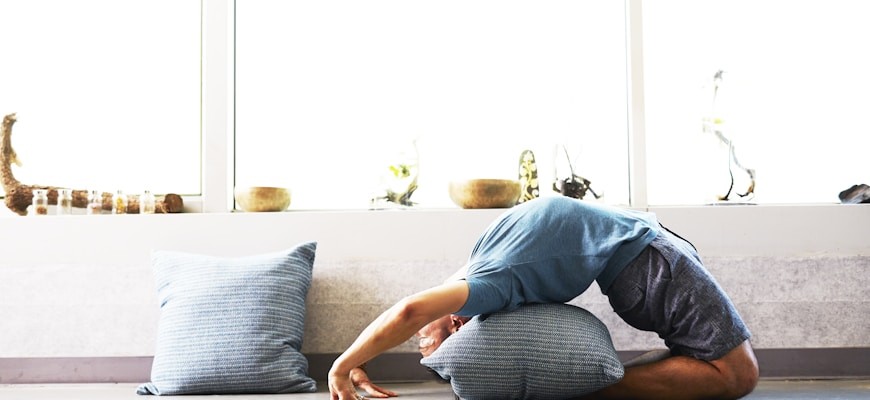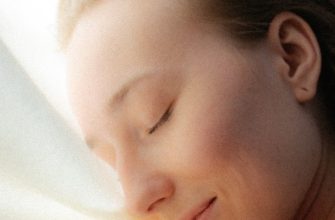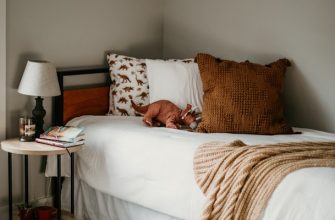- The Science of Sleep: Boosting Focus and Productivity
- Creating a Sleep-Friendly Environment: Tips for Better Rest
- The Impact of Your Workspace on Concentration and Sleep Quality
- Organizing Your Space: Strategies for Enhanced Productivity
- Balancing Rest and Work: Finding the Right Atmosphere
- Tools and Techniques for a More Productive Sleep and Work Space
The Science of Sleep: Boosting Focus and Productivity
Understanding the intricate relationship between sleep and concentration is essential for anyone looking to enhance productivity. Quality sleep significantly influences cognitive functions, including memory, attention span, and overall mental clarity. By ensuring an optimal sleep environment, individuals can improve their focus and effectiveness during waking hours.
The science of sleep reveals that various factors impact how restorative sleep is. This includes elements such as room temperature, lighting, and comfort of bedding. A well-organized space can promote better sleep, which in turn enhances daily productivity levels.
- Room Temperature: Maintaining a cool room temperature can facilitate deeper sleep cycles, leading to improved concentration.
- Lighting: Dimming lights in the evening and reducing blue light exposure from screens can prepare the brain for restful sleep, which aids in better focus during the day.
- Bedding Comfort: Investing in a quality mattress and pillows can significantly impact sleep quality, directly correlating with enhanced cognitive performance.
- Noise Levels: Minimizing disruptions from outside noise can create a tranquil sleep environment, allowing for uninterrupted rest.
Implementing these strategies can lead to a more conducive atmosphere for sleep, ultimately resulting in heightened concentration and productivity. A well-structured space not only supports restful nights but also fosters energized and focused days, reinforcing the crucial link between sleep quality and cognitive efficiency.
Creating a Sleep-Friendly Environment: Tips for Better Rest
Creating a sleep-friendly environment is essential for enhancing rest and improving concentration. A conducive sleeping space can significantly impact overall productivity and mental clarity. To optimize sleep quality, consider implementing the following strategies:
- Control Light Levels: Use blackout curtains or shades to block out sunlight and artificial light. This helps in regulating the body’s natural circadian rhythms, promoting better sleep.
- Maintain Ideal Temperature: The bedroom should be kept cool, ideally between 60-67°F (15-19°C). A comfortable temperature encourages deep sleep, which is crucial for maintaining productivity during waking hours.
- Minimize Noise: Use white noise machines or earplugs to block disruptive sounds. A quiet environment is vital for uninterrupted sleep, which enhances focus and concentration during the day.
- Choose Comfortable Bedding: Invest in a quality mattress and pillows that suit personal preferences. Proper bedding supports restful sleep, allowing the mind to recharge and improve focus.
- Incorporate Calming Colors: Opt for soft, neutral colors in the bedroom decor. Shades like pale blue, green, or lavender can induce relaxation and create a peaceful atmosphere conducive to sleep.
- Avoid Electronics: Keep electronic devices out of the bedroom to reduce distractions. The blue light emitted by screens can interfere with melatonin production, making it harder to fall asleep.
By focusing on these elements, it is possible to create a sanctuary that promotes better rest. A well-designed sleeping environment directly correlates with enhanced concentration and productivity during the day. Prioritizing sleep is crucial for achieving optimal performance in daily tasks.
The Impact of Your Workspace on Concentration and Sleep Quality
The workspace plays a crucial role in influencing both concentration and sleep quality. An organized and well-designed environment can significantly enhance focus, while a chaotic or uncomfortable space may lead to distractions and decreased productivity. To maximize efficiency, it’s important to consider various elements of the workspace that can impact cognitive function and restfulness.
- Lighting: Natural light is essential for maintaining concentration and regulating sleep patterns. A well-lit workspace can reduce eye strain and enhance mood.
- Ergonomics: A comfortable chair and desk setup are vital for maintaining focus. Poor posture can lead to discomfort, which in turn affects concentration levels.
- Noise Levels: Excessive noise can disrupt focus and diminish productivity. Utilizing soundproofing techniques or noise-canceling headphones can create a more conducive environment for work.
- Clutter: A tidy workspace promotes mental clarity. Reducing clutter helps minimize distractions, allowing for better concentration on tasks.
- Color Scheme: The colors of the workspace can influence mood and productivity. Calming colors such as blues and greens can create a peaceful environment that fosters concentration and relaxation.
In addition to the above factors, the layout of the workspace should support efficient workflow. A well-structured environment facilitates smooth transitions between tasks, which can enhance overall productivity. Moreover, incorporating elements that promote relaxation, such as plants or artwork, can positively affect both concentration and sleep quality.
Ultimately, investing time and resources into creating an optimal workspace can yield significant returns in terms of productivity and well-being. By understanding the relationship between environment, focus, and rest, individuals can cultivate a space that promotes both concentration and restorative sleep.
Organizing Your Space: Strategies for Enhanced Productivity
Organizing your space is crucial for enhancing productivity, especially when it comes to achieving a good night’s sleep and maintaining concentration during the day. A well-structured environment can significantly impact focus and efficiency.
- Declutter Regularly: Keeping the workspace tidy can minimize distractions. A clean environment promotes clarity and fosters a productive mindset.
- Designate Specific Areas: Creating zones for different activities, such as work, relaxation, and rest, can help in maintaining a balance between productivity and downtime.
- Optimize Lighting: Proper lighting is essential for concentration. Natural light is the best option, but adjustable artificial lighting can also aid in creating the right atmosphere for productivity.
- Ergonomic Furniture: Investing in comfortable and supportive furniture can help reduce physical strain, making it easier to stay focused on tasks.
- Incorporate Plants: Adding greenery to the workspace can improve air quality and boost mood, which in turn enhances concentration and productivity.
By implementing these strategies, it is possible to create a space that not only promotes restful sleep but also maximizes concentration and productivity throughout the day. A thoughtfully organized area can lead to improved overall performance, making it essential for anyone looking to enhance their efficiency.
Balancing Rest and Work: Finding the Right Atmosphere
Creating a harmonious environment that balances rest and work is essential for enhancing sleep quality and maintaining concentration. The right atmosphere can significantly impact productivity levels, making it crucial to design a space that promotes both relaxation and focus.
To achieve this balance, consider the following elements that contribute to a productive atmosphere:
- Lighting: Utilize natural light as much as possible. Soft, warm lighting can create a calming effect, while bright, cool light is ideal for work tasks that require high concentration.
- Color Scheme: Choose colors that evoke tranquility for rest areas, such as soft blues or greens, and opt for invigorating colors like yellow or orange in workspaces to stimulate creativity.
- Furniture Arrangement: Position furniture to minimize distractions. A well-organized desk can help maintain focus during work hours, while comfortable seating in rest areas encourages relaxation.
- Sound Control: Implement soundproofing measures or use white noise machines to create a serene environment that separates work from leisure, aiding both concentration and sleep.
- Personal Touches: Incorporate plants or artwork that inspire positivity. Personalizing a space can boost morale and enhance motivation, making it easier to switch between work and rest modes.
Establishing a balance between rest and work requires careful consideration of the environment. By creating a space that caters to both productivity and relaxation, individuals can optimize their sleep patterns and improve concentration, leading to enhanced overall performance.
Tools and Techniques for a More Productive Sleep and Work Space
Creating a conducive environment for sleep and work is essential for enhancing productivity and maintaining concentration. The right tools and techniques can significantly impact both restful sleep and effective work performance. Below are strategies that can be employed to optimize a workspace and sleeping area.
- Ergonomic Furniture: Invest in an ergonomic chair and desk to promote good posture during work hours. Proper alignment reduces strain and enhances focus.
- Lighting: Utilize adjustable lighting options. Natural light is ideal during the day, while softer, warmer lights can create a calming atmosphere for sleep.
- Decluttering: Keep the workspace organized and free from distractions. A tidy environment fosters better concentration and reduces stress levels.
- Technology Management: Limit screen time before bed. Implement tools such as blue light filters on devices to improve sleep quality.
- Sound Control: Consider noise-canceling headphones or white noise machines to block out distracting sounds during work and promote a peaceful sleep environment.
- Temperature Regulation: Maintain a comfortable temperature in both the workspace and sleeping area. A cooler room is generally more conducive to restful sleep.
- Sleep Schedule: Establish a consistent sleep routine that aligns with work hours. Prioritizing a regular sleep schedule enhances concentration and productivity.
Implementing these tools and techniques can lead to a more productive sleep and work space. A well-organized environment supports better focus during tasks and contributes to improved sleep quality, ultimately fostering a balance between work and rest.








